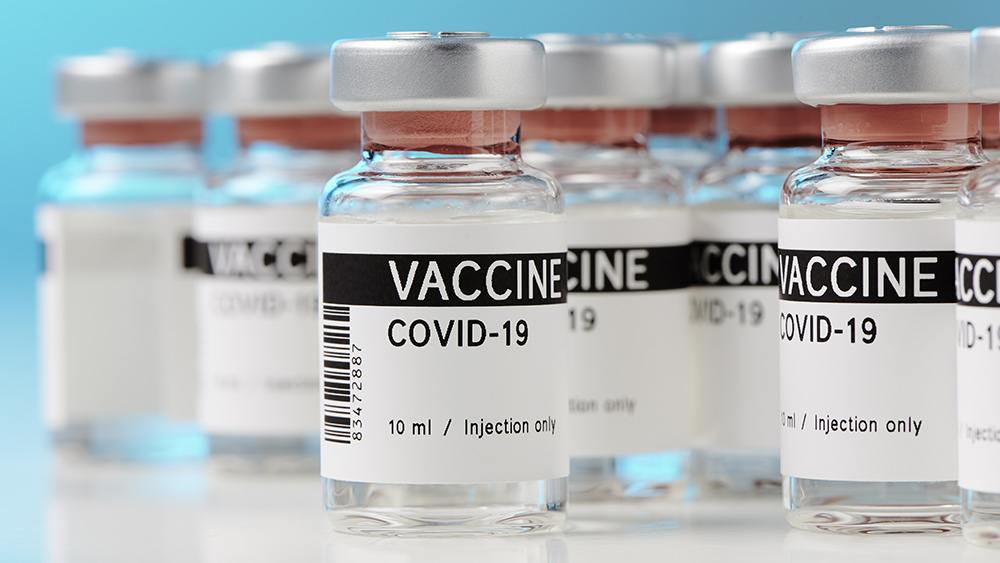Study reveals how vitamin E protects skeletal muscles
04/16/2019 / By Jose Lopez

Aging is a complex biological process, and it’s one that can even lead to several muscular disorders. Recently, scientists from the U.S. and Taiwan focused on how age changes the health of our skeletal muscles and how vitamin E may be used to mitigate those changes.
Our skeletal muscles are the most common of the three types of muscles in our body, the others being cardiac and smooth muscles. They are voluntary, meaning they are under our conscious control. They are attached to our bones and they allow the movement of our body parts.
One of the effects that aging has on our skeletal muscles is sarcopenia, or the loss of muscle strength and mass. It comes from several causes which the scientists have identified as:
- Impaired neuromuscular innervation. This condition happens when nerves do not stimulate the muscles to the fullest. When muscles are not stimulated fully, they degrade and lose mass.
- Transition of skeletal muscle fiber type. Muscle fibers can adapt to changing demands by changing size or fiber type composition, classified as slow or fast twitch for simplicity. Fast twitch muscle fibers can change into slow twitch ones because of non-use or non-stimulation.
- Reduced muscle regenerative capacity. This means muscle is not being biologically repaired nor new muscle formed quick enough to replace damaged or dead muscle cells.
The researchers attribute these problems to:
- Chronic inflammation. Other scientists have discovered that muscle cells reduced in size when exposed to the inflammation marker C-reactive protein (CRP). CRP level is elevated when there is inflammation and infection in the body.
- Oxidative stress. Scientists have known for nearly 60 years now that free radicals oxidize or damage cells.
- Mitochondrial dysfunction. Mitochondria are found inside nearly every cell in the body. They process oxygen and convert substances from the foods we eat into energy. When they do not function properly, a host of diseases affect the body.
The researchers also examined the current literature discussing sarcopenia, and it suggests to them that vitamin E may be able to reduce the effects of that disorder. It appears that the antioxidant and anti-inflammatory properties of vitamin E molecules may lessen skeletal muscle dysfunction due to age, while at the same time enhancing muscle regeneration.
Previous researchers have already done preclinical and human experimental studies which show that vitamin E supports:
- Myoblast survival, differentiation, and proliferation. A myoblast is a cell that becomes a cell of muscle fiber. Vitamin E helps myoblast cells to survive, to split into new cells, and to multiply.
- Membrane repair. The cell membrane protects the cell from its surroundings. It regulates the materials that enter and leave the cell. Once the membrane is damaged — due to free radicals, for example — the cell may die and diseases might progress. Damaged cell membranes can be repaired by Vitamin E.
- Mitochondrial efficiency. The main job of mitochondria is to take in nutrients from the cell, break them down, and turn those into energy. This energy is then used by the cell to carry out various functions. Mitochondria supply 90 percent of the energy our body needs. Mitochondrial performance in skeletal muscle decreases as we age, studies show. Vitamin E slows down this decrease.
- Muscle mass. The size of our muscles affects our strength and energy, allowing us movement and balance. Vitamin E develops muscle mass.
- Muscle contractile properties. Our strength, speed, and endurance depend on how well our muscles contract and elongate. Previous studies have shown that Vitamin E deficiency reduces muscle endurance due to free radical damage on muscle membranes.
- Exercise capacity. The more you exercise, the longer you live. Vitamin E contributes to increased exercise capacity due to all the benefits it provides to our cells and muscles.
A few human cross-sectional observational studies reveal positive links between levels of serum tocopherol (vitamin E in the blood) and muscle strength.
The researchers would like to see more long-term clinical trials, but they see promise in the potential of Vitamin E in protecting skeletal muscle.
Sources include:
Submit a correction >>
Tagged Under:
aging, alternative medicine, anti-inflammatory, antioxidants, muscles, natural cures, natural medicine, nutrients, prevention, remedies, research, sarcopenia, supplements, Tocopherol, vitamin E
This article may contain statements that reflect the opinion of the author
RECENT NEWS & ARTICLES
COPYRIGHT © 2017 RESEARCH NEWS





















